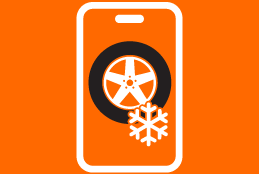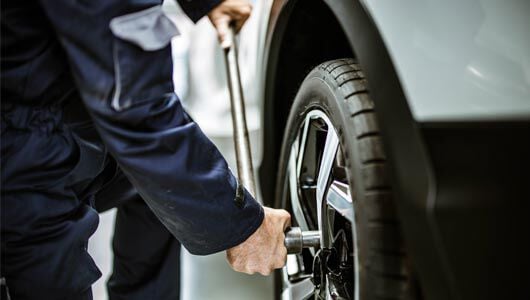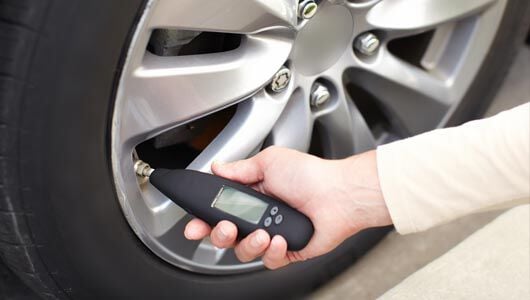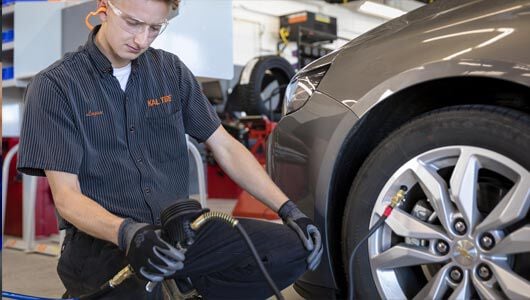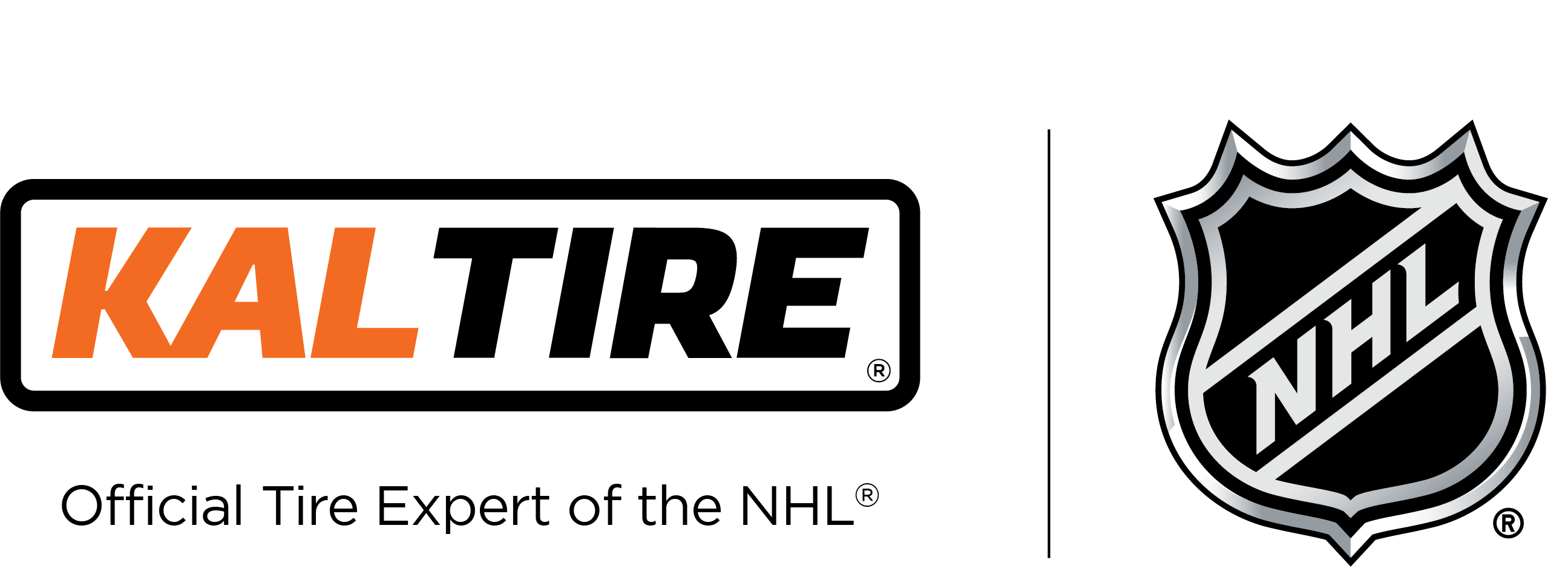Can you drive on a flat tire? What to do when you get a flat.
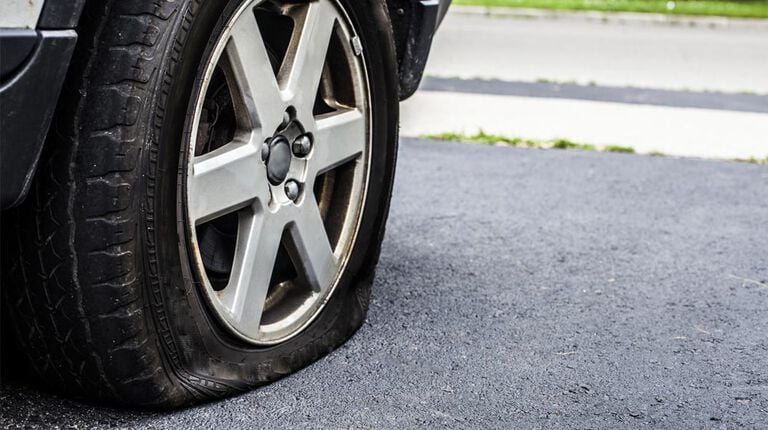
It usually happens in one of two scenarios: you walk out to your car in the morning and spot your tire sagging on the ground, or, you’re driving and hear that unmistakable flap, flap, flap sound of an airless tire. What should you do when you get a flat? Can you drive a flat tire?
What you do next is critical to ensuring your safety.
What should you do when you get a flat tire?
If you notice a flat tire when your car is parked:
1. Inspect it
Gently run your hands along the back and front of the tire to see if you can spot any foreign objects such as a nail or an industrial staple in the tread or sidewall. If you can’t see anything, your tire might just be low on air.
2. Put on your spare tire
Tire manufacturers recommend you replace a tire that is flat or damaged with the spare, and take the flat or damaged tire to a tire service centre right away. If you bought your tire at Kal Tire and it is repairable, our Customer Care Plan lets us fix it for free, so bring the flat tire to a Kal Tire near you.
If you notice a flat tire when you’re driving:
If you don’t hear your tire going flat, you’re going to feel it. When you have a flat tire and you’re driving, it’ll feel like your vehicle is being pulled to the side of the flat tire, and it’ll feel like you can’t accelerate.
1. Safely pull over
It’s important to stay calm and, instead of slamming on your brakes, gently apply increasing pressure so you can maintain control of the vehicle.
Get as far to the edge of the road as you can, hopefully in a shoulder area with a bit of extra space. It’s important to give yourself as much room as possible so you’re not at risk of being hit by passing vehicles. If you have safety cones, set them down behind your vehicle to give other drivers an extra warning.
2. Put on your spare tire
No matter what, don’t drive on that tire. Get your spare on using our handy guide on how to change a tire.
If the cause of your flat tire was a puncture, we can probably repair it by patching and plugging it. If the flat was caused by something else, that tire will likely need to be replaced.
Read our article about how to repair tire punctures to learn more about fixing flats.
Why you shouldn't drive on a flat tire
1. You could damage the tire beyond repair
If there is no air or not enough air in the tire (which is needed to support the weight of your vehicle), it can cause ‘internal structural damage,’ meaning the material inside the tire can get damaged beyond repair. What’s actually happening is the heat buildup inside the tire is so intense, the tire starts to disintegrate. As soon as that happens, the structure of the tire can no longer be repaired. Meanwhile, the external problem—the puncture caused by a screw or nail in the tread—could have been repaired.
2. You could damage the rims
Driving a flat tire that’s completely underinflated means you’re driving on your rims, which is likely bending and damaging your rims.
3. You could damage your vehicle
Driving on a seriously degraded flat tire for a long period can actually cause a fair extent of damage to your vehicle. As the tire comes apart, separates from the rims and begins to flail around the tire wheel, important (and expensive) components such as brake lines, rotors, fenders and suspension parts are apt to get seriously damaged.
4. You could lose control and seriously hurt yourself or others
Tire failure can lead to unsafe handling even loss of vehicle control. Damage to the brake lines or suspension components can also cause erratic vehicle behaviour—both of which could lead to an accident.
What causes flat tires?
1. Penetrating objects
- Nails and screws
- Industrial staples
- Scissors
Some of the strangest things our technicians have found in a flat tire include a four-inch heel from a ladies shoe, a 17 mm wrench, a railroad spike, and a bone.
Glass usually isn’t strong enough to penetrate the steel belt construction, but it can chip your tread.
2. Slow leaks
It’s also possible for the penetrating object to fall out, creating a slow leak in the tire. In this case, you might notice a decrease in tire pressure.
It could also be what is called a “bead leak.” This is a leak that happens around the edge of the wheel where the tire attaches, it can be caused by a corroded wheel or debris not allowing the tire to make an airtight seal. Think of it like a lid on your plastic container not closed all the way, allowing everything to spill out.
In any case, a slow leak is determined by immersing the entire tire and wheel assembly in water to locate a puncture and repair it.


